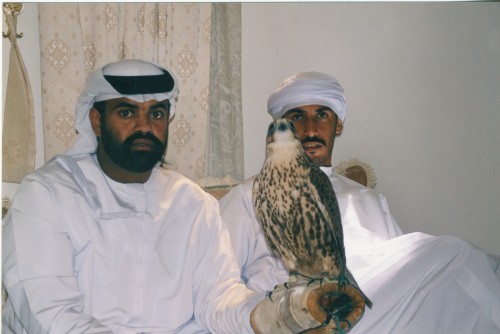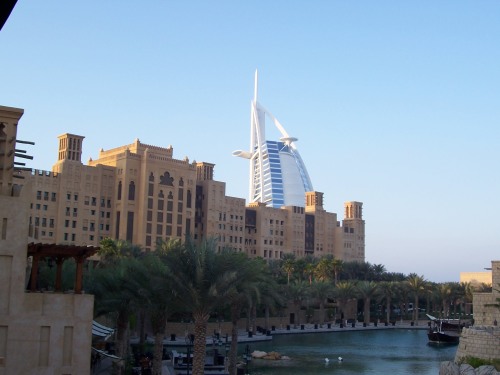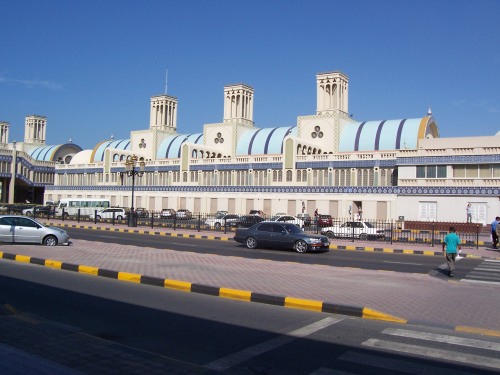 I took this photo in the men’s quarters in the home of my student and friend, Musabbah, who has been featured in a couple of these posts, including one I deleted. (A cropped version of the photo is on my website, http://www.garrycraigpowell.com) Musabbah and his family lived in Medinat Zayed, a little town in the desert on the edge of the Liwa Oasis. The town was built for the Bedu, as were a whole ring of towns around the capital, Abu Dhabi, by Sheikh Zayed, with oil money. Fifty years ago the grandparents and parents of these people were living in tents. They are immensely grateful to the royal family for having given them ‘everything,’ as they put it. In truth, their villas are very comfortable, they have servants, drive luxury cars, have completely free education, for men and women, up until the end of college, and free healthcare in hospitals reserved for the locals. It’s certainly true that oil has brought undreamt-0f riches to these tribesmen, who fifty years ago lived without air conditioning in one of the harshest climates in the world. Infant mortality was very high then, too.
I took this photo in the men’s quarters in the home of my student and friend, Musabbah, who has been featured in a couple of these posts, including one I deleted. (A cropped version of the photo is on my website, http://www.garrycraigpowell.com) Musabbah and his family lived in Medinat Zayed, a little town in the desert on the edge of the Liwa Oasis. The town was built for the Bedu, as were a whole ring of towns around the capital, Abu Dhabi, by Sheikh Zayed, with oil money. Fifty years ago the grandparents and parents of these people were living in tents. They are immensely grateful to the royal family for having given them ‘everything,’ as they put it. In truth, their villas are very comfortable, they have servants, drive luxury cars, have completely free education, for men and women, up until the end of college, and free healthcare in hospitals reserved for the locals. It’s certainly true that oil has brought undreamt-0f riches to these tribesmen, who fifty years ago lived without air conditioning in one of the harshest climates in the world. Infant mortality was very high then, too.
However, although they enjoy modern comforts–I rarely heard anyone sentimentally long for the ‘good old days’–Emiratis are traditional in their customs and pursuits. Probably no sport is so symbolic of the culture as falconry, or hawking. This was once the sport of the nobility in Europe, though it’s long ceased to be practised commonly there. But in the Gulf, men still love to train their birds, usually peregrine falcons, to hunt desert hares and the hbara, or Arabian bustard. This game bird breeds in central Asia in the spring, then flies south to the Arabian peninsula for the winter. More than once I’ve been in the desert and have come across a lone Emirati training a falcon. He’ll have it tied to a light string, and will toss pieces of meat into the air for the falcon to catch. The falconer has to wear a thick gauntlet, like this one, to avoid serious injury from the falcon’s talons. Emirati men are immensely proud of their birds, which are often very valuable, and you will frequently see a man with one on his wrist in a luxury hotel, having coffee with his friends, just as westerners take their pet dogs out with them. However, they are almost always hooded. An unhooded falcon is supposed to be dangerous. These birds can be aggressive; I’ve heard that they can peck at your eyes if left unhooded. By the looks of it, Musabbah’s brother, the man with the bird on his wrist, was unworried by this. In general, I found the Bedu to be as close to fearless as any people I’ve ever encountered. I’m not sure if that was because of their trust in God, which was certainly great, or if it was because the harshness of their lives in the past simply inured them to danger or suffering.
In any case, an interesting consequence of Emirati men’s love of falconry has been that the numbers of desert hares, and particularly hbara, declined disastrously, to the extent that a conservation station was set up near Al Ain, staffed by mainly western biologists and ecologists. These studied the breeding habits of the hbara, made recommendations about how to limit hunting, and so on. So important is falconry as a national symbol that major efforts have been to save their habitat.
You will notice that I have been discussing men all along, because traditionally this is a men’s sport, unlike medieval Europe, where it was enjoyed by both sexes. However, while I taught at UAE University in the mid-nineties, a group of girls on the women’s campus formed a falconry club, which got national media coverage. I believe the girls trained their own falcons, and certainly took them into the desert and hunted with them. In Stoning the Devil, Badria is a member of this falconry club; it suits her fierce and fearless nature. Alia, her cousin and friend, on the other hand, is afraid of the birds, fearing that they might peck out her eyes, as her father has warned her, and on the whole prefers shopping.
I don’t suppose there are all that many women in the UAE who practise the sport, but once again, to my mind, this is an indication of the boldness, the initiative, and independence of Arab women. They will do whatever men do, as long as they are not actively prevented. I have seen the founder of the university women’s falconry club, a slight, pretty girl who designed jewelry, in her black robes, with a falcon on her wrist. This girl hoped to be allowed to study art in Europe. Perhaps the falcons were a symbol to these women of limitless freedom, as well as of power.









